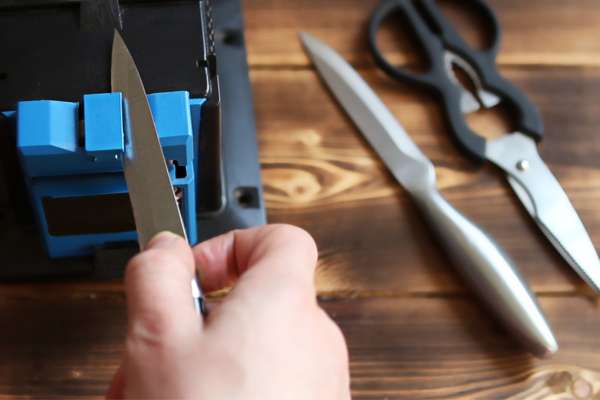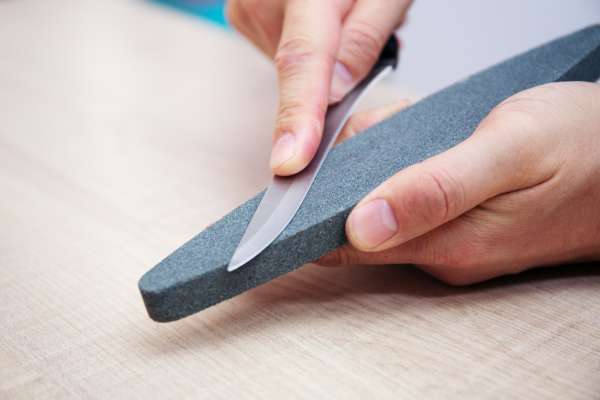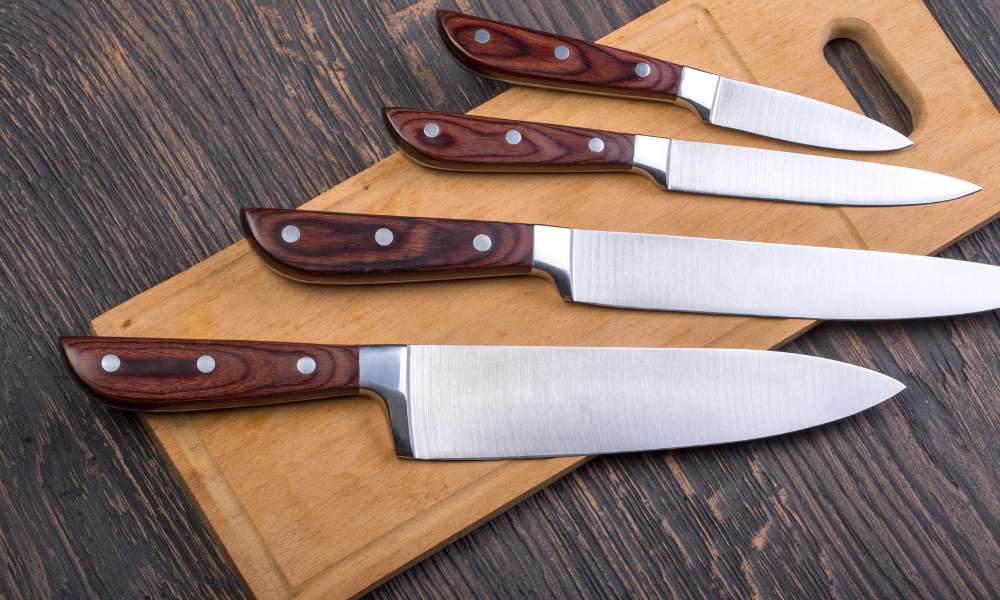Sharpen kitchen knives Is An essential skill For both amateur cooks And culinary professionals, ensuring that these tools perform At their best. This process not only improves The efficiency And safety of your cooking experience but also prolongs The life of your knives. With A variety of methods available, From using A honing steel To employing more advanced sharpening stones or electric sharpeners, understanding the right technique Can Make A significant difference. This guide aims To Demystify The process, offering step-by-step instructions and tips To maintain the sharpness of your kitchen essentials, ensuring they are always ready To tackle any ingredient with precision.
Importance of Sharp Kitchen Knives

Sharp kitchen knives are fundamental To efficient and enjoyable cooking. A well-sharpened knife not only makes prep work faster but also safer. When knives are sharp, they require less force To cut through ingredients, reducing The Risk of the knife slipping and causing injury. Additionally, sharp knives contribute to The quality of the food preparation; They preserve The integrity of delicate ingredients. And ensure precise cuts, which is vital For cooking techniques that demand uniformity In size and shape for even cooking. The meticulous care of sharpening kitchen knives reflects A Cook’s commitment to their craft, highlighting. The importance of maintaining tools In Optimal condition for The Best culinary outcomes.
How Dullness Affects Cutting
Dull kitchen knives can significantly hinder the cooking process, affecting both. The safety and The quality of The food being prepared. When knives lose their edge, more pressure. Is required to make cuts, increasing The likelihood of The knife slipping and potentially causing injury. Dull blades Can crush rather than slice through ingredients, affecting the texture And appearance of The food. For instance, bruising herbs rather than cleanly cutting them can lead To premature wilting and loss of flavor. Similarly, tearing or squashing fruits And vegetables rather than slicing them neatly can impact the presentation and quality of A dish. Thus, keeping knives sharp Is not just A matter of efficiency but also pertains To safety and culinary excellence.
Methods Of Sharpening
1. Using A Whetstone

Sharpening kitchen knives with A whetstone Is A traditional and highly effective method that offers precision control over the sharpening process. A whetstone, also known as a sharpening stone, comes In various grit sizes, ranging from coarse to fine, allowing for the removal of old steel and the honing of A sharp edge. The process begins with soaking the stone in water (for water-based stones) To lubricate the surface, followed by placing it on a stable surface. The knife Is then held at The appropriate angle (typically around 15-20 degrees for most kitchen knives) against The stone’s surface, sliding It across with gentle pressure In A Controlled motion. This action Is Repeated on both sides of The blade, starting with The coarse grit to remove any nicks or dullness and finishing with the fine grit to polish And hone The edge.
2. Electric Knife Sharpeners

Electric knife sharpeners offer A convenient And quick method To sharpen kitchen knives with minimal effort. These devices typically feature one or more slots with built-In abrasive wheels that spin when powered on. To sharpen A knife, The blade is gently pulled through these slots, starting with the coarsest abrasive to remove any imperfections And moving to finer abrasives To refine and hone the edge. Electric sharpeners are designed to hold the knife at the correct angle automatically, making them accessible For users of all skill levels. While The convenience And speed of electric sharpeners are appealing, it’s important to select A model that Is compatible with The type of knives being sharpened to avoid damaging The blades. This method is ideal for those seeking a quick and efficient way To maintain the sharpness of their kitchen knives without The learning curve associated with manual sharpening methods.
3. Honing Rods

Honing rods, often mistaken For sharpen, play a crucial role in the maintenance of kitchen knives by realigning the blade’s edge. Unlike sharpening, which removes metal from The blade To create A new edge. Honing simply straightens The existing edge without shaving off metal. This process helps To maintain A Sharp edge for longer and should be done regularly, ideally before or after each significant use of the knife. To use a honing rod, The base of the knife’s edge is placed against. The top of the rod at an angle of approximately 15 to 20 degrees. The knife is then drawn down and across The rod, ensuring both sides of the blade are treated equally. While honing rods do not sharpen A dull blade, their regular use prolongs. The sharpness of the edge, reducing The frequency of sharpening required.
4. Professional Sharpening Services

For those who prefer not To sharpen their knives themselves or possess high-quality knives that require expert care, professional sharpening services are an excellent option. These services are provided by skilled craftsmen who use A combination of traditional. And modern techniques To sharpen and restore knives. Professional sharpeners can assess The condition of A knife and choose. The most appropriate method To sharpen It, whether it involves using a whetstone, belt sander, or other specialized equipment. This option ensures that knives are sharpened To a high standard, with attention To preserving The blade’s integrity And prolonging its life. Opting for a professional service Is Particularly beneficial for expensive or specialty knives, guaranteeing. The job Is done correctly and safely, without The risk of damage that can occur with inexperienced handling.
5. Preparation For Sharpening

Preparing for knife sharpening Is a crucial step to ensure the process Is Both efficient and effective. Start by selecting the appropriate sharpening tool, whether It be a whetstone, electric sharpener, or honing rod, based on your knife’s needs and the desired sharpness level. Ensure your work area Is stable, well-lit, and free from distractions. A non-slip mat or towel under your sharpening tool for safety. If using a whetstone, remember To soak it in water beforehand as per The manufacturer’s instructions. Additionally, familiarize yourself with the correct angle. For sharpening your specific type of knife To maintain its edge without causing damage. Gathering all necessary equipment And preparing your workspace. In advance streamlines the sharpening process, making it safer and more enjoyable while achieving. The best possible results For your kitchen knives.
6. Using Electric Sharpeners

Using electric sharpen simplifies The task of maintaining sharp kitchen knives, making. It accessible even for those with little To no manual sharpening experience. These devices are designed with preset angles, eliminating The guesswork involved In achieving the perfect edge. To use, simply turn on the sharpener, insert the blade into The designated slot starting. The knife’s heel and gently pull It through towards The tip, applying minimal pressure. This action is typically repeated A few times across different stages, from coarse to fine, depending on The sharpener’s design. Electric sharpeners are A quick and efficient way to restore a knife’s edge, ideal For busy individuals looking to maintain their kitchen tools with minimal fuss and maximum effectiveness.
How To Use A Honing Rod
Using A honing rod is A straightforward yet effective method To Maintain The edge of kitchen knives between sharpen. To begin, hold The Rod vertically with its tip securely placed on A non-slip surface. Grasp the knife by The handle and place its heel (the part of The blade closest to The handle) against the top of The rod at a 15 to 20-degree angle. With light pressure, glide the blade down the rod And towards. Ensuring the entire length of The blade, from heel to tip, makes contact with The rod. Repeat this action several times on one side before switching to the other, maintaining. The same angle And number of strokes to ensure An even honing. Regular use of a honing rod realigns the knife’s edge, keeping It sharp and ready For efficient cutting, slicing, and dicing.
Conclusion
Maintaining sharp kitchen knives is essential For cooking safely and efficiently. Whether using A Whetstone, An electric sharpener, or A honing rod, each method has Its advantages. And can be selected based on personal preference, The condition of The knives, and the desired level of precision. Whetstones offer control and a traditional sharpening experience, electric sharpeners provide convenience and speed. And honing rods are excellent for daily maintenance To keep knives at their best. By understanding And applying these sharpening techniques, You can ensure that your kitchen knives remain. In Top condition, ready To handle any culinary challenge.
